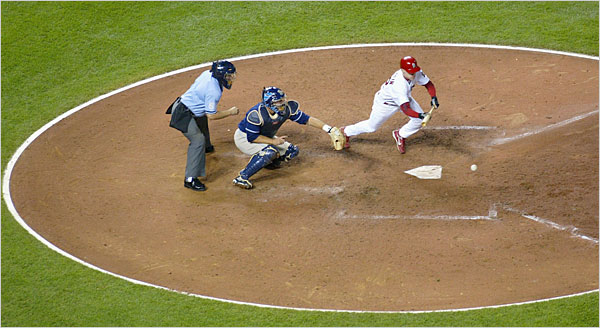When you know who is covering
April 14, 2012 by Coach McCreary
Filed under Coaching, Hitting
In yesterday’s post, I explained the common method used by middle infielders to communicate to each other who is covering second base on a steal attempt. I mentioned that as you go up in levels, it becomes more important for the
defense to not allow the offense to know who will be covering. Today’s post will discuss a couple things that an offense can do if they do know which middle infielder is covering beforehand.
As a disclaimer, let me first say that even if an offense knows for sure who is covering, in many cases, especially at the high school level and below, it won’t really make much of a difference. Generally speaking, most players at those levels are not good enough to execute the skills needed to take advantage of that information. In theory, if a batter knows that the second baseman is covering, he can hit the ball to that side of the field because of the hole that is now created when the second baseman leaves his position to cover the bag on the steal. Often this is the dream scenario of a hit-and-run play. In reality, having the bat control to actually accomplish that on a real pitch is no easy task at any level. That’s why many middle infielders don’t worry about the need to hide the information as to who is covering.
However, there is a play that can work even if you have a less then skilled hitter at the plate. It’s a push bunt / drag bunt. If a steal is put on and a right handed batter knows that the second baseman is covering, he can push bunt the pitch so the ball rolls out to where the second baseman would have been. For many hitters, push-bunting is an easier skill to learn than trying to manipulate the ball with a full swing. A left handed batter could drag bunt towards that area as well. Of course, the key to this is that the batter pushes or drags the ball hard enough so that it gets past the pitcher and rolls out to where the second baseman would have been.
There are two reasons why this play can work. The obvious one is that the second baseman is not in position to get to the bunted ball. The second one is that even if the ball is bunted short and is fielded by the pitcher and/or first baseman who charge the bunt, often the second baseman is unable to cover first base like he would need to on a similar sac bunt to the first base side. He obviously cannot be in two places at the same time. He can’t cover the bag on the steal and cover first base on the bunt.
To learn more about the technique involved in push bunting, go back and read these two posts. (Part 1 and Part 2)






Leave a Reply